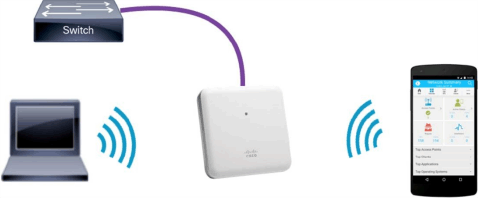
These instructions should be all you need to get the most out of the Access Point. Front PanelCisco Business Wireless access points and mesh extenders offer a simple-to-deploy solution designed to empower small and.
I tried checking end of life announc.A Field Notice issued over the weekend describes the defect as “Access points manufactured with wrong domain” and adds that “In the manufacturing process, the radios for some APs were set for regulatory domains which do not match the Product ID (PID).”See what Wired and Wireless LAN Access Infrastructure Cisco users also considered in. Switches and access point work fantastic for enterprise networks.The Field Notice adds that the mistake manifests when “A newly installed Access Point (AP) fails to join its controller or it joins the controller, but is only able to bring up one radio due to a manufacturing mismatch between the AP's domain and the radio's domain.”Australian users won't feel much pain: only seven of the 87 impacted devices are sold here, namely models:Cisco told CRN that 207 access points have been affected across Australia. "In terms of customer impact, the majority of the units have already been RMA'd (Return Merchandise Authorisation) via our CX Centre (formerly TAC). Wireless-G Access Point 4 Chapter 1: Product Overview Thank you for choosing the Wireless-G Access Point.
The AP can offer one or more BSSes and connect VLANs to SSIDs.Below is a picture of what this looks like on an enterprise network:I highlighted the connections for one of the APs. Wireless and wired clients are on the same LAN and can communicate with each other.An autonomous AP has all the required intelligence to serve wireless clients and to connect to the wired network. We use most wireless networks as an extension of the wired network. The form is not simple, a reflection of the 87 devices impacted by the problem. I tried contacting cisco sales via chat but they were unable to provide information for the last few days.

You also need to configure a new VLAN on all APs and switches.You could make your life a bit easier and use a management platform to configure the APs. This means your VLAN has to span the entire network.If you want to configure a new SSID, you have to configure it on all APs. Take a look at the following picture:When a wireless user wants to roam from one AP to an AP that is connected to the access layer of another distribution layer, you’ll have to cross the core layer.
Split-MAC ArchitectureAutonomous APs work alone we configure them one by one. It’s a fine solution for a small network, but when the network grows, it doesn’t scale very well. There is also no central point in the network to monitor wireless traffic and do things like policing, QoS, or intrusion detection.Another term for the autonomous AP solution is the local MAC architecture.As you see, there are some limitations and problems with the autonomous AP setup.

Association and reassociation (roaming)Since these functions are not real-time, we can move them to a central point, the WLC. We separate the following management and real-time functions of the AP: The AP should handle real-time functions, but everything that is not delay-sensitive can do from a central location.

These control messages are encrypted. We use this to configure and manage the AP. CAPWAP control messages: contain information about WLAN management. It’s based on the Lightweight Access Point Protocol (LWAPP), a legacy Cisco proprietary solution. CAPWAP encapsulates all data between the lightweight AP and the WLC.CAPWAP is a standard, defined in RFC 5415, 5416, 5417, and 5418. CAPWAPThe AP and WLC connect with a tunneling protocol, the Control And Provisioning of Wireless Access Points (CAPWAP) tunneling protocol.
Take a look at the following picture:The tunnel is between the IP address of the lightweight AP and the WLC. This requires some more explanation. This is useful since APs are typically on the access layer, and the WLC is in a central location (core layer or data center attached to the core).Because of the CAPWAP tunnel, the AP and WLC are not only physically separated but also logically separated. Using a tunnel means the lightweight APs and WLC don’t have to be in the same VLAN. These messages are unencrypted by defaultTunneled traffic can be switched or routed.
The lightweight AP offers two SSIDs:How can the lightweight AP offer an SSID that uses VLAN 20 or 30 while it’s connected to a switchport in VLAN 11? That’s what the CAPWAP tunnel is for it tunnels VLAN 20 and 30 traffic from the lightweight AP to the WLC. The lightweight AP connects to an access mode switchport in VLAN 11.


 0 kommentar(er)
0 kommentar(er)
